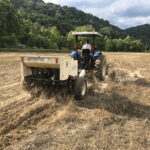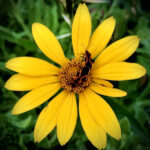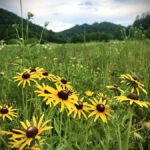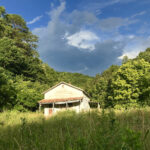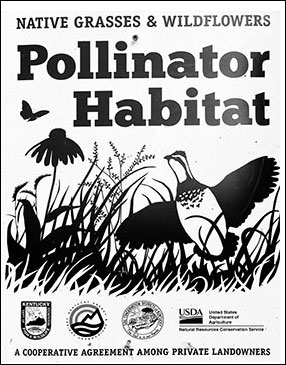 South Fork Farm, like many of the farms in this area, grew tobacco. Most of these farmers maximized their fields by clearing as much of the timber as possible. In Eastern Kentucky, the flatter, tillable land is in the river bottoms, and the deforestation along these rivers leads to excessive erosion. In addition, the traditional practice of farming, one that doesn’t include a cold-season cover crop, leaves the topsoil exposed and vulnerable to the many winter floods that wash over these fields.
South Fork Farm, like many of the farms in this area, grew tobacco. Most of these farmers maximized their fields by clearing as much of the timber as possible. In Eastern Kentucky, the flatter, tillable land is in the river bottoms, and the deforestation along these rivers leads to excessive erosion. In addition, the traditional practice of farming, one that doesn’t include a cold-season cover crop, leaves the topsoil exposed and vulnerable to the many winter floods that wash over these fields.
While we planted soybeans and corn for several years at first, through research and influences from friends and the writings of Wendell Berry, I decided to restore the field and farm property to its native habitat. I firmed up undercut banks with rock and planted over 1000 trees along the riverbank, creating a riparian buffer. The non-native and invasive species that plagued the field were eradicated and replaced with native plants, warm-season grasses, and forbs.
Another benefit of restoring the property to its native state is that it benefits the wildlife. Active fields only yield nutrition to turkey and deer for a fraction of the year and provide no bedding or habitat. Although corn and soybeans support some animals for a fraction of the year, native plants and grasses provide food, habitat, bedding, and security to most species.
The project was more than I could take on alone, but thanks to the Kentucky Department of Fish and Wildlife and my regional Biologist Randall Alcorn, we formulated a multi-faceted plan.
Since planting the warm-season grasses, the abundance of wildlife was noticeable within the first three months of growth. In our third year of growth, there have been more turkeys, rabbits, birds, deer, and even some identified calls of Bobwhite Quail.
You can learn more on how you can improve your property by visiting the Kentucky Department of Fish & Wildlife Resources website and get involved in their “I Support Wildlife” Program.


